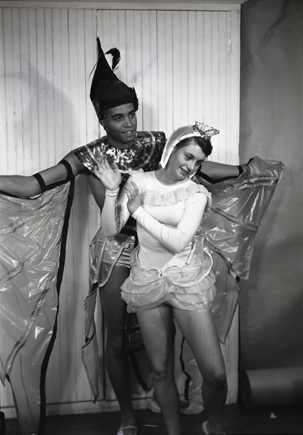SMTD History
Although the performing arts have been an integral part of the University of Michigan, dating to its founding in 1817—creativity was adopted as a core value from the start—the study of music, theatre, and dance was not formalized until later in the 19th century. Once established, each area evolved steadily, consistently attracting internationally renowned artists and scholars to serve as faculty and administrators. From the start, these visionaries have built rich curricular programs to rival the world’s finest conservatories, ultimately making the School of Music, Theatre & Dance (SMTD) one of the nation’s top performing arts schools, known for interdisciplinary experiences that can only be offered at a world-class research university.
The School’s origins go back to 1880, when Henry Simmons Frieze, founder and president of the Choral Union and the University Musical Society (UMS), urged that music be included among the course offerings of the University of Michigan and that a professorship in that subject be established. Several months later the Regents approved Calvin Cady (whom Frieze had already hired to conduct the Choral Union) as first instructor in music.
The Ann Arbor School of Music (the forebear of SMTD) opened for business in the fall of 1880, when Cady also offered his first courses within the University. The independent school was soon brought under the auspices of UMS, which, until 1929, hired the faculty and awarded the diplomas. Albert Stanley succeeded Cady in 1888 and was chair of music until 1921.
In 1892, the private school was renamed University School of Music and moved to rooms rented in Newberry Hall, before occupying its own building on Maynard Street—its home for the next 70 years. In theory, the School remained separate from the University, but in 1905 students in the Literary College (LSA) were allowed to elect music courses at the School for credit toward the BA degree.
Meanwhile, at the turn of the century, dance was offered as a course for the first time (1909), launching a steady growth of interest and participation, primarily among women students. In 1915, the first for-credit course in play production was offered, though acting classes had begun 25 years earlier. But theatre and dance remained housed at other U-M units for more than 60 years.
In 1929, the School of Music formally became part of the University; it continued to be governed by UMS, subject to Regental oversight, but its degrees (BM and MM) were now conferred by the University. Earl V. Moore (BA, 1912; MA, 1914) was named director in 1923.
In 1940, UMS yielded control of the School to the University, with Moore remaining as director; his title changed to “dean’ in 1946. He continued to serve until 1960. The Regents authorized the first doctoral degrees in musicology and music education (PhD and EdD) through the Rackham School in 1945; the DMA in composition and performance would follow in 1953.
In 1951, the eminent architect Eero Saarinen presented long-range plans for the development of property acquired by the University north of the Huron River—plans that soon included a new School of Music building. The new facility, named the Earl V. Moore Building, opened its doors in summer 1964 with a ceremony that bestowed honorary degrees on Leonard Bernstein, Aaron Copland, Aline Saarinen, and Earl V. Moore.
In 1974, the Department of Dance joined the School, and the Department of Theatre & Drama followed suit in 1984. In the following years, the Departments of Musical Theatre, Jazz & Contemporary Improvisation, Performing Arts Technology, Entrepreneurship & Leadership, and, most recently, Chamber Music were added.
This tremendous growth necessitated additional facilities: The Moore Building was expanded in 1985 and again in 2015, when the William K. and Delores S. Brehm Pavilion was added. The Walgreen Drama Center—headquarters for theatre and musical theatre studies—was completed in 2007. In 2021, the Dance Building opened, bringing all of SMTD together on North Campus for the first time in the school’s history.
Today, the School of Music, Theatre & Dance continues to thrive, and is distinguished by its unparalleled synergy of scholarship, artistry and comprehensive education in all disciplines of performance, as well as in research and pedagogy.

James Earl Jones in The Birds, c. 1954, U-M News and Information Services Photographs, Bentley Historical Library, U-M Library Digital Collections.
Historical List of SMTD Deans
Earl V. Moore
(1946–1960; Director from 1921–1946)
James B. Wallace
(1960–1970)
Allen P. Britton
(1971–1979)
Paul Boylan
(1979–2000)
Karen L. Wolff
(2000–2005)
Christopher W. Kendall
(2005–2015)
Aaron P. Dworkin
(2015–2017)
Melody Racine
(2017-2018) Interim
David Gier
(2018-)
